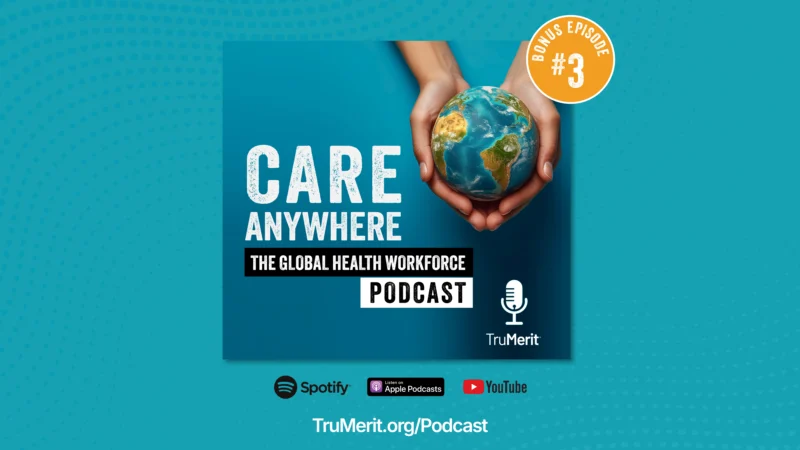Designing for Noise: Building Quieter Healthcare Facilities
The timeless movie classic, “One Flew Over the Cuckoo’s Nest,” is set in the early 1960s. The grim psychological hospital is depicted with blank, white walls, hard and uninviting furniture, and barred windows to prevent the residents from escaping. Despite taking place almost 60 years ago, it sometimes seems like the hospital’s depiction doesn’t land too far from the impersonal and stressful environments of many hospitals today. Mix the impersonal atmosphere with machine beeping, blasting intercoms, and the noises of other patients, and you have a perfect recipe for patient discomfort, lack of privacy, and an overall negative experience.
Patients may hear over 86 noises at one time. Imagine how quickly one’s sensory system would become overloaded. Gina Sansivero, VP of Marketing and Corporate Communications at AtlasIED, painted a picture: “Things like a lot of buzzing, a lot of chaotic speak, the unintelligible announcements and that fear that you’re not hearing something really important are things that healthcare facilities have to take into consideration when it comes to patient comfort,” she said.
No patient wants to deal with this compounded stress of overwhelming auditory input– especially on top of being sick or injured. Sleep quality, cognitive processing, speech, and physiological health can all experience detrimental impacts from hospital noise. “If we’re unable to sleep, then our bodies are unable to heal,” stated Sandra Soraci, Senior Channel Marketing Manager at Armstrong Flooring. She added, “Increased noise levels have been found to contribute to an increased length of stay and medication use as well as impact on the wound being able to heal.”
These distractions are reflected in patient satisfaction with hospitals. The Hospital Consumer Assessment of Healthcare Providers and Systems (HCAHPS), is a 29-item instrument for measuring patient perception of hospital experience after discharge. This tool plays a role in helping consumers choose the right hospital and holds a lot of value in determining hospital quality and funding. Dissatisfaction with hospital noise is a key weakness on the survey and scored as the second lowest item for patient satisfaction in the HCAHPS July 2020 through March 2021 discharge report. “Quietness at the hospital is consistently rated across the U.S. as one of the lowest rated items on the HCAHPS survey,” said Soraci.
Not only are constant, buzzing distractions detrimental to patients’ vitals, but speech privacy is another huge area of concern. Sansivero explained, “Things in a healthcare facility that might make a patient feel uncomfortable are things like overhearing another patient’s conversation with his or her healthcare provider.” With only thin curtains separating one patient from another in the same room in some cases, it can be easy to overhear what are supposed to be private conversations about surgeries, treatments, and in worst-case scenarios—death.
HIPAA requires a confidential level of speech in hospitals, but how often is this actually adhered to? Lack of privacy can result in adverse feelings such as patient nervousness and annoyance. It can even cause hesitancy for patients to fully disclose medical information if they fear lack of privacy.
The positive side of the coin is that there’s plenty of space for companies in the healthcare industry to improve patient comfort, reduce distractions, and improve privacy. “Speech privacy or sound masking technologies are a relatively inexpensive way of enhancing the comfort level and privacy of a patient in a healthcare facility,” said Sansivero.
One company, Loftwall, is taking action to make patients feel more comfortable regarding hospital design. “Things can be hospital-grade cleanable but personalized and personal, so color is a huge thing for us,” Bryce Stuckenschneider, CEO of Loftwall, explained.
In terms of noise reduction and privacy, various companies are acting on these as well. “We’re building plexiglass barriers to help diminish that noise, we’re also utilizing white noise machines,” stated Kevin Stevenson, Host of the I Don’t Care podcast. “Specification and selection of interior finishes are, without question, are at top of mind with our architects, our designers, and our health systems,” Soraci added. AtlasIED also offers many solutions, “For example, a really comprehensive ecosystem of public address, intercom, paging, and mass communications that can tie into and be the hub for other systems such as nurse call and life safety. We also offer background music systems and sound masking systems that really tie into patient comfort as well as HIPAA compliance,” Sansivero added.









